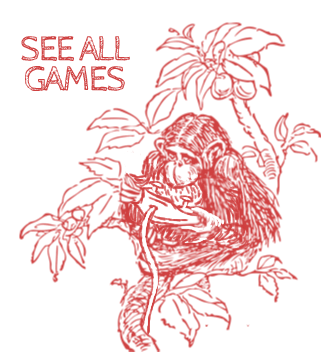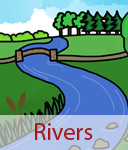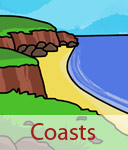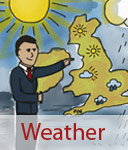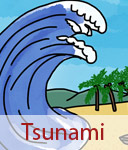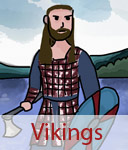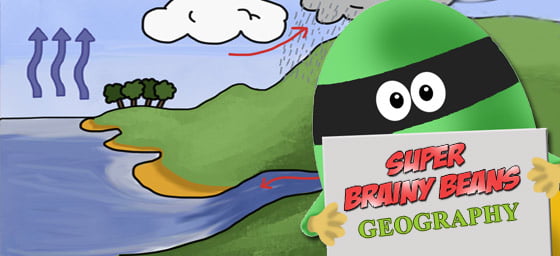
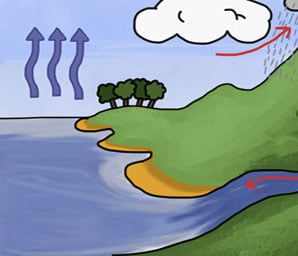
Water Cycle
Water Cycle for kids learning at Primary School. Key Stage 1 & Key Stage 2 (KS1 & KS2) Primary homework help on water and the water cycle.
What is the water cycle?
Have you ever wondered why we never “run out” of water? That’s because the water on Earth is always being recycled! There is always the same amount of water on our planet, but it keeps moving around in different forms. This repeating journey is called the Water Cycle.
Water can be:
- A liquid in rivers, lakes, and oceans.
- A solid as ice, snow, or glaciers.
- A gas when it evaporates into the air as water vapour.
The Water Cycle is like a giant circle that never ends. Water moves from the ground to the sky and back again, over and over. Without it, we wouldn’t have rain, rivers, drinking water, or life on Earth!
How does the water cycle work?
The Water Cycle has four main stages:
Evaporation
The Sun shines on rivers, lakes, and oceans. The heat turns some of the water into water vapour (an invisible gas). This vapour rises up into the sky. A similar process called transpiration happens when plants release water vapour through their leaves.
Condensation
As the water vapour rises higher, the air gets colder. The vapour cools down and changes back into tiny liquid water droplets. These droplets group together to form clouds. This process is called condensation. Water usually stays in the clouds for about nine days before falling back to Earth.
Precipitation
When clouds get too heavy and full of water droplets, the droplets fall back to Earth. This is called precipitation. Depending on the temperature, it can fall as rain, snow, sleet, or hail.
Collection
Once the water reaches the ground, it gathers in different places.
- Some water runs into rivers and flows back into the oceans.
- Some soaks into the soil and becomes groundwater, which people can pump up and use.
- Some collects in lakes and ponds.
This is the water we use every day—for drinking, bathing, farming, and helping plants grow. And from here, the whole cycle starts again with evaporation!
 Weather Wizkids
Weather WizkidsUnderstand how the water cycle works with our facts that help explain the different processes in a way that is easy to follow.
Types of precipitation
Precipitation is the name for any kind of water that falls from the sky to the Earth’s surface. Most of the time this means rain, but precipitation can come in many different forms depending on the temperature and weather conditions.
- Rain – The most common type of precipitation. Raindrops form when water droplets in clouds join together and become heavy enough to fall.
- Snow – When the air is cold enough, water vapour freezes into ice crystals. These stick together to form snowflakes, which fall gently to the ground.
- Sleet – A mix of rain and snow that often falls when the weather is cold and damp.
- Hail – Small balls of ice that form in storm clouds when raindrops get blown around by strong winds and freeze before falling. Hailstones can be tiny like peas—or even as big as golf balls in extreme storms!
- Freezing Rain – Rain that freezes into ice as soon as it hits a cold surface like the ground, trees, or cars, making everything slippery.
Because the UK gets a lot of rain, people here have invented lots of words and phrases to describe it! Instead of just saying “it’s raining,” you might hear:
- Drizzle – very light rain with tiny droplets.
- Shower – short bursts of rain that can start and stop suddenly.
- Downpour – heavy rain falling very quickly.
- Tipping down – a British phrase for really heavy rain.
- Sprinkle – a light scattering of rain, almost like a watering can.
- Sheets of rain – when it rains so heavily it looks like curtains of water.
- “Raining cats and dogs” – a funny saying meaning it’s raining very heavily.
Why does it snow?
The air up in the sky is made up of tiny, tiny water droplets called water vapor. When it's really cold, these water droplets freeze and become tiny ice crystals.
When there's a lot of cold air up in the sky, the tiny ice crystals start sticking together. They come together and form snowflakes. Snowflakes are beautiful and unique because each one has its own special shape and pattern. When the snowflakes become too heavy for the air to hold them up, they start falling from the sky. And that's when it starts to snow! The water can also fall as hard balls of ice called hail.
Types of clouds
Clouds come in all shapes and sizes, and they can tell us a lot about the weather. Some clouds are thin and wispy, while others are thick and heavy. Here are some of the most common types you might see when you look up at the sky:
Cumulus Clouds
These are the big, fluffy clouds that look like cotton balls or heaps of whipped cream. They are usually bright white and mean fair weather. But if they grow taller and darker, they can turn into Cumulonimbus clouds and bring thunderstorms.
Stratus Clouds
Stratus clouds are flat, grey, and spread out across the sky like a big blanket. They can make the day look dull and gloomy and often bring light rain, drizzle, or mist.
Cirrus Clouds
These clouds are found very high in the sky and look thin, wispy, and feathery—like brushstrokes of white paint. Cirrus clouds usually mean the weather might change soon, often bringing rain or snow in the next day or two.
Cumulonimbus Clouds
These are the giants of the cloud world! Cumulonimbus clouds are tall, towering, and powerful, reaching high up into the sky. They bring thunderstorms, heavy rain, lightning, and sometimes hail or even tornadoes.
Altostratus Clouds
Altostratus clouds form a thin, grey or blue-grey sheet across the sky. They are higher than stratus clouds but lower than cirrus clouds. They often mean rain or snow is on the way.
Other cloud types
- Nimbostratus – Thick, dark grey clouds that cover the whole sky and bring long, steady rain or snow.
- Stratocumulus – Low, lumpy clouds that cover much of the sky but usually don’t bring heavy rain.
- Altocumulus – Mid-level clouds that look like little white or grey patches, often appearing in groups or waves.
- Cirrostratus – Thin, icy clouds that spread across the sky, often creating halos (circles of light) around the Sun or Moon.
- Cirrocumulus – Small, white, patchy clouds that can make the sky look like fish scales. These are sometimes called a “mackerel sky.”
- Contrails – Man-made clouds that form behind aeroplanes as their engines release hot water vapour into cold air.
- Fog – Fog is actually a cloud at ground level! It makes it hard to see and often happens in the morning or near rivers and lakes.
Make your own cloud
Have you ever noticed that on a really cold day, when you breathe out, you can see your breath? That’s because your breath contains tiny droplets of water vapour. When the warm air from your lungs meets the cold air outside, the water vapour cools down quickly and turns into little drops of liquid water. These tiny drops float in the air and look just like a cloud!
So in a way, every time you see your breath on a chilly morning, you’re making your very own mini cloud.


